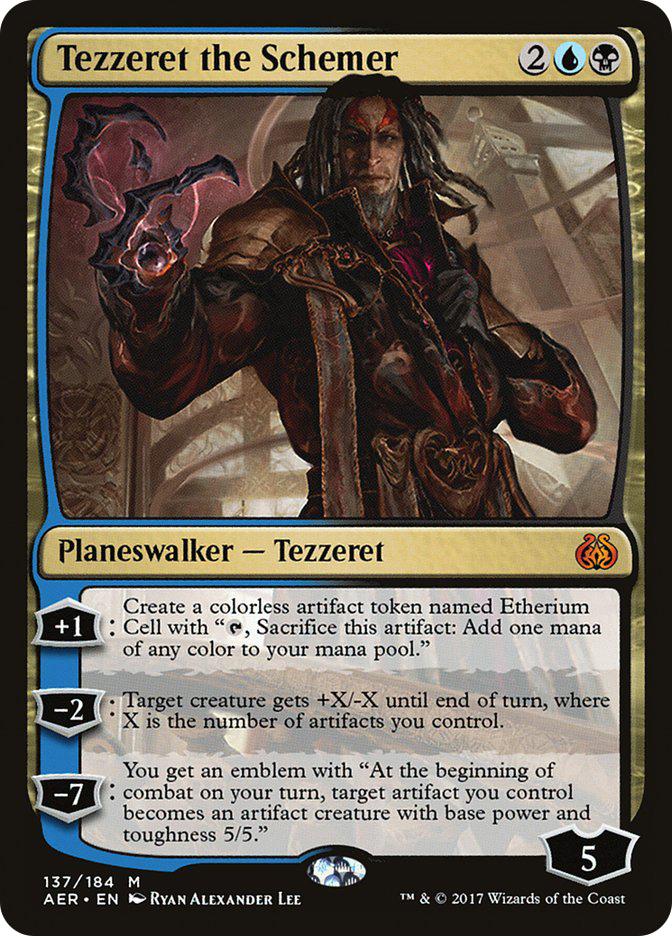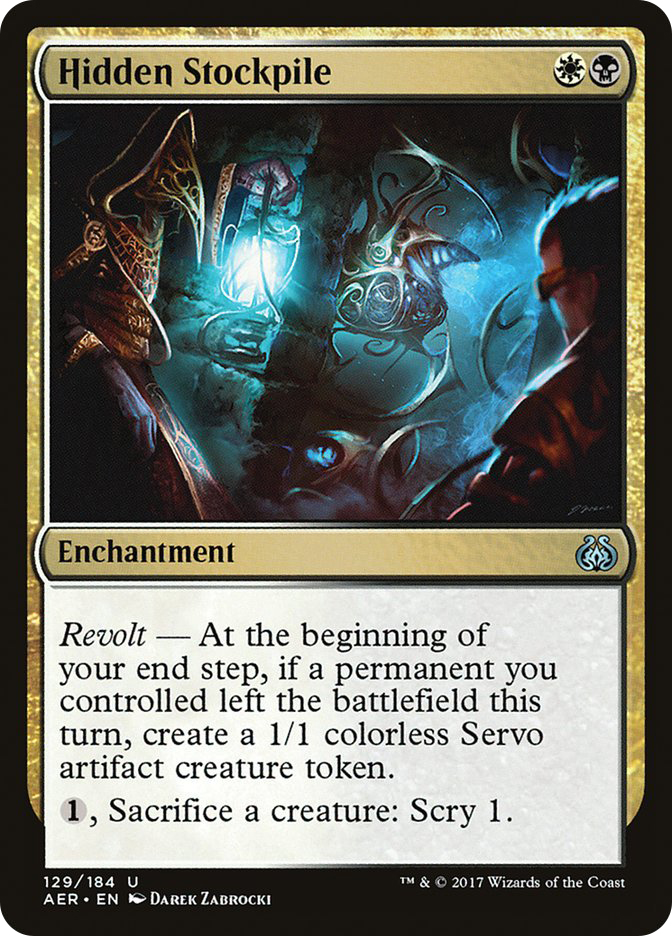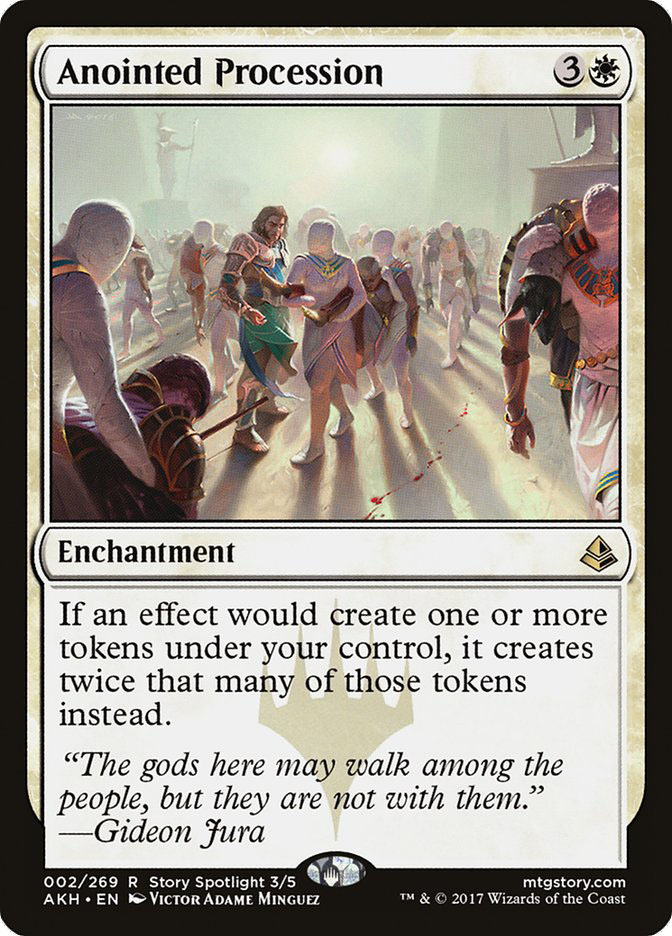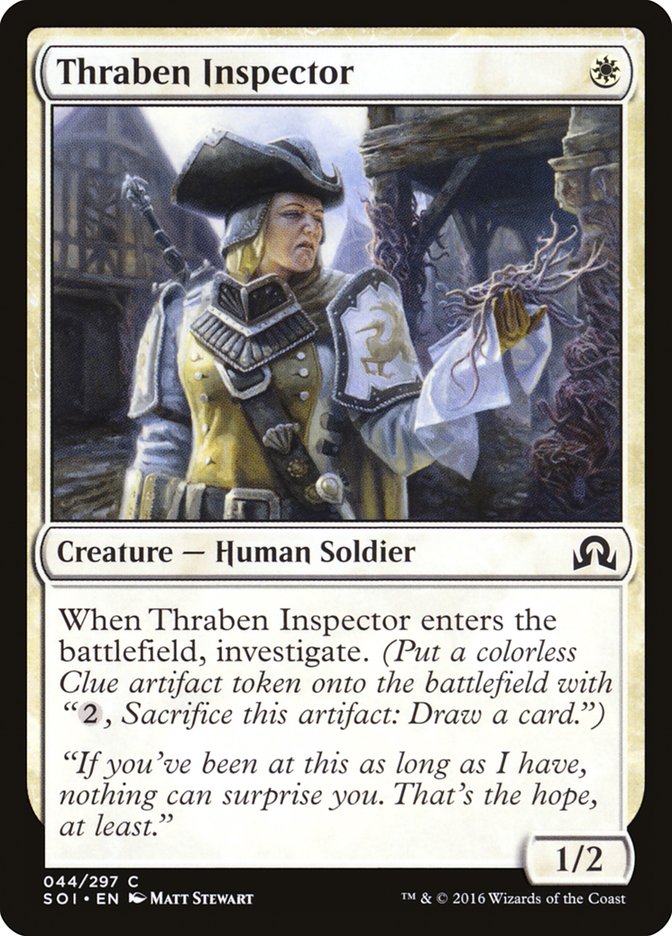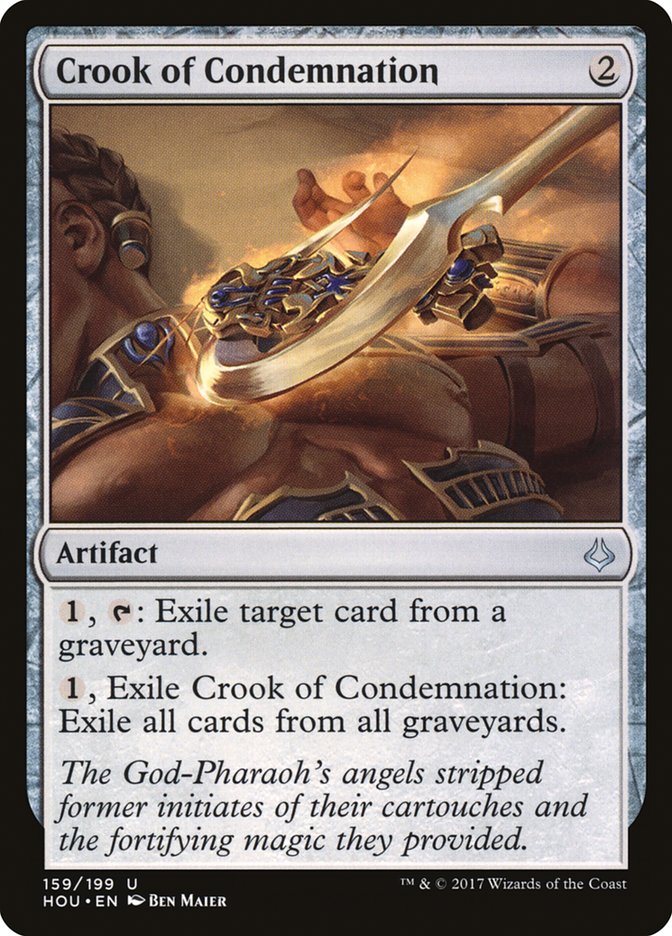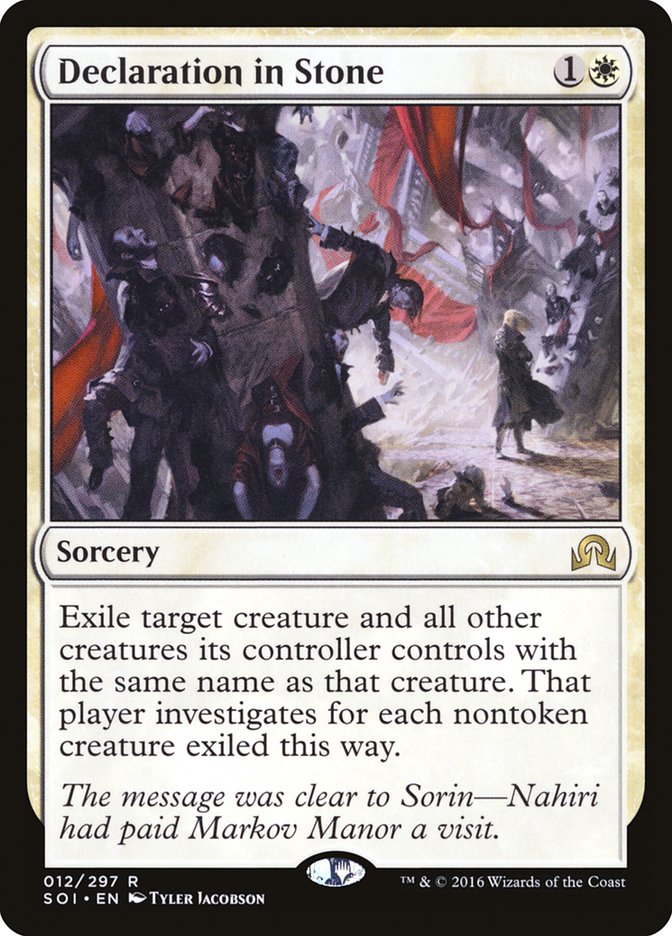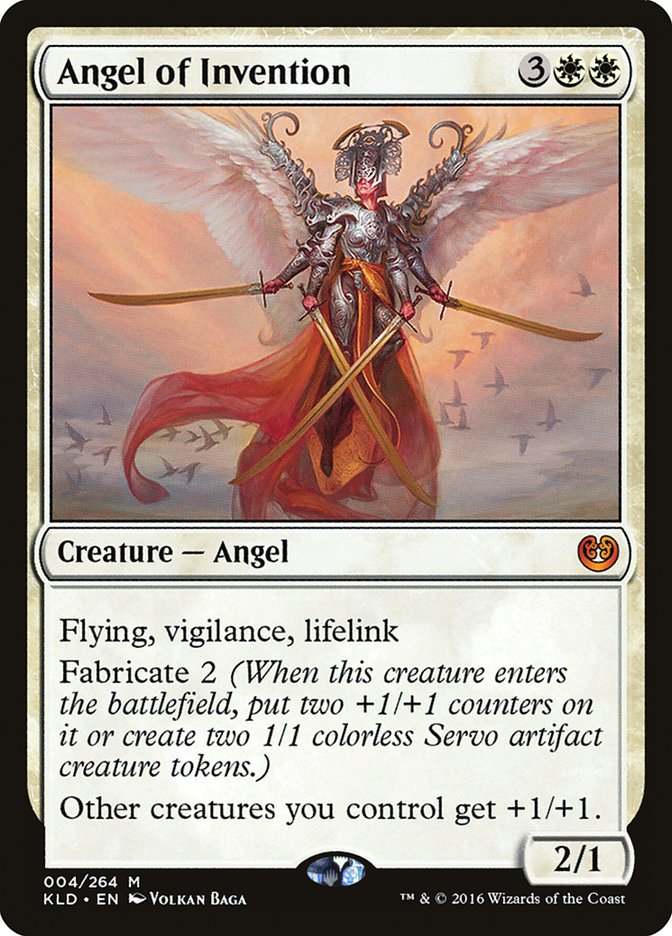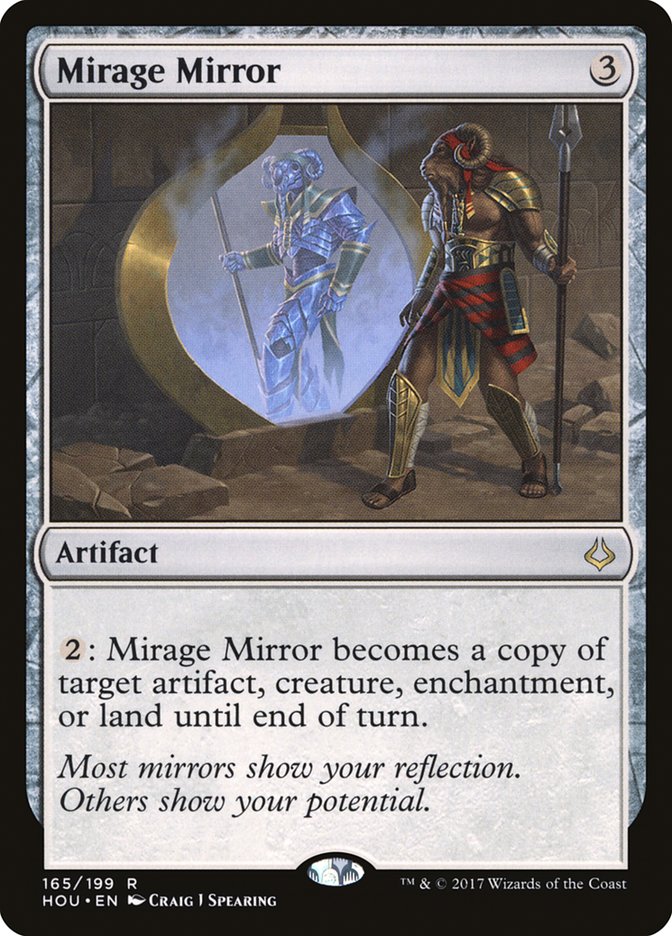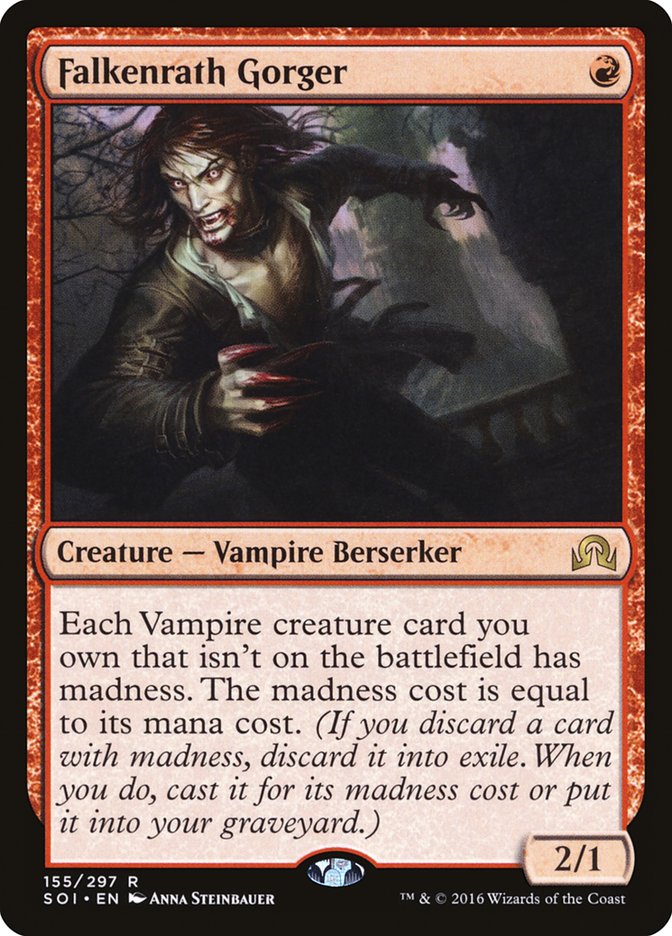Grand Prix Washington DC was a blast to follow and watch. Exceptional
plays, creative decks, and solid sportsmanship made for an enjoyable event
and an excellent cherry on top of a fully recovered and realized Standard.
But while the Grand Prix marks the competitive end of this particular
Standard, most people have about three weeks’ worth of this Standard left
to play; between local tournaments, Preliminary Pro Tour Qualifiers,
Standard Showdowns, and FNMs, choosing a deck is still important. As
Standard gets better, I even think there’s still some room for brewing, and
the Grand Prix even gave us a little fuel. While many of the format’s
steady archetypes made an appearance in the Top 8 of this event,
Corey Baumeister’s deck
would have likely been the deck I would have wanted to pilot.
Creatures (26)
- 3 Eldrazi Displacer
- 4 Thought-Knot Seer
- 4 Matter Reshaper
- 4 Archangel Avacyn
- 4 Thraben Inspector
- 3 Selfless Spirit
- 4 Walking Ballista
Lands (25)
Spells (9)

I’ve been trying mono-colored Eldrazi decks in the margins of my deck
testing for the last few weeks, but white, despite having only one Eldrazi
that requires a white source, is likely the best color to complement these
otherworldly beasts. Watching him play was a blast; Reddit user Riggnaros captured
the critical play
that bought him a Top 8 berth.
There’s still plenty of Standard in the format to enjoy, and we’ve still
got several local opportunities to enjoy them! Just this past weekend, I
got to put a deck I’ve been working on to the test, and while not quite as
star-studded as Corey’s list, it’s a fun one that utilizes lots of
forgotten cards from rotating and non-rotating sets.
Tezzeret the Schemer has been on my radar for a long time. A high-loyalty,
low-ultimate planeswalker with a specific, build-around-me theme represents
my favorite non-Tibalt kind of planeswalker. The opportunity for him to see
prime-time play is dwindling, along with the format’s proclivity to
effectively answer planeswalkers in the first place, so Tezzeret the
Schemer soon passed into obscurity (and a low sticker price), which is
enough for me to drop in and give it a try. I mean, really, Tezzeret the
Schemer is $2.99 at the time of this article. Planeswalkers don’t get much
lower, and I should know; I just bought thirty-odd planeswalkers for an
alternate Cube format. But that’s for another time.
Tezzeret the Schemer clearly belongs in an artifact deck, but blue and
black leave something to be desired in the current format. The obvious
choice, red, doesn’t actually give the deck the edge it needs.
But white does.
Since Thraben Inspector was released, it has impacted the format more, just
in sheer number, than any other common in the format. A 1/2 creature that
replaces itself was crucial for many reasons, and even in the last throes
of this Standard, it continues to be critical, both in decks like Corey’s
and in our deck today.
Hidden Stockpile makes tokens that I can use to defend myself, tap for
improvise effects, or close out a game where my threats, while weak,
outnumber theirs. Anointed Procession helps everything the deck is doing:
making Etherium Cells with Tezzeret the Schemer, extra Servos, and more
Clues with Thraben Inspector. Altogether, white seemed much more
interesting.
Creatures (11)
Planeswalkers (4)
Lands (23)
Spells (22)

The deck is a grindy control deck, but it has multiple, solid paths to
victory and a diverse enough set of removal that we hope to answer our
opponent, fast or slow. In testing, the deck got the job done, albeit
slowly, so before I took it to a real event, I wanted to beef up the threat
numbers. Tezzeret the Schemer as a four-of may seem like a lot, but it
seemed like a critical piece of the puzzle.
To best explain the deck, let’s take it through its paces at a Standard
Showdown event last Saturday. A four-round bout with this deck showed its
strengths and weaknesses.
Round 1 – Temur Energy
My first opponent, Gene, mustered an aggressive plan, sticking Longtusk Cub
and energy producers and accruing massive amounts of energy. However, this
seemed to be his best-optimized threat, which, without trample, couldn’t
break through an army of Servos, Thraben Inspectors, and, eventually, a big
old Herald of Anguish. It took his life, unbent by other combat or
self-pain through Desert lands or the like, in four smooth strokes.
Tezzeret proved to be an excellent damage soaker in Game 2. While he still
assembled an army of Longtusk Cubs, he couldn’t get the energy trigger from
hitting Tezzeret the Schemer, and a couple of on-time Consigns and the
Oblivions that followed kept him out of answers, especially after resolving
a potentially troublesome Glorybringer.
Just like before, Herald of Anguish smashed him to death, sacrificing
artifacts at will to obliterate his army.
1-0
Tezzeret the Schemer was an important role-player; while not ultimately a
win condition, it was always worth the mana. It’s still likely that,
without the threat of killing his creatures, Gene would have been able to
use his energy more aggressively instead of keeping it in reserve to pump
his creatures in response to Tezzeret’s minus. Herald of Anguish’s discard
trigger was exceptional, as the deck struggled to push through an army of
Servos, and could hardly do it off the topdeck.
Round 2 – Jeskai God-Pharaoh’s Gift
My second opponent was Ryan, an ever-friendly Standard grinder at the shop
and always a generous, well-matched, and welcome adversary. In the first
game, I lost to the on-time activation of his God-Pharaoh’s Gift, with
which I couldn’t hope to compete after he had discarded two Angel of
Invention.
As I picked up my sideboard for Game 2, I kicked myself for not including
Crook of Condemnation; while God-Pharaoh’s Gift doesn’t target, and thus
it’s not a hard answer, the ability to cherry-pick creatures to keep him
off the six-creature mark of Gate to the Afterlife is still a promising
option, and it would have worked with the deck’s many artifact synergies.
Next time.
Now, I had to get creative with cards like Declaration of Stone, which do
not grant your opponent a token if they hit an embalmed creature. If your
opponent has a real Champion of Wits out and two embalmed tokens, your
opponent only gets one Clue. It seemed like a corner case, but it’d be
something he’d have to play around come Game 3. I sideboarded in
counterspells Metallic Rebuke and Confirm Suspicions alongside the other
removal, should he attempt to underestimate his land needs. I wasn’t
worried about Negate; I was worried almost entirely on creatures I could
not effectively block.
Game 2 did not go well for Ryan; after missing on some lands and with
multiple Heralds of Anguish thanks to Mirage Mirror, I blasted him down
with an ahead-of-curve Herald of Anguish, shredding his hand and life
total. Although I had artifacts and mana to wipe out his shrimpy,
non-embalmed team, I didn’t need it; he was dead two swings later.
Game 3 was a nailbiter that saw him resolve Angel of Invention on-curve and
me countering with Declaration in Stone, Consign on God-Pharaoh’s Gift
pre-combat, and a swarm of Angel of Condemnation holding down my Tezzeret
the Schemer and some hard scry decisions. I wanted to play a different
game, one based on tempo rather than the depletion of resources.
I realized that Jeskai God-Pharaoh’s Gift’s greatest enemy was its mana,
both in the height of its threats’ costs and the color. I decided to tax
his resources shortly before time was called. We went to turns, and he was
at five life. On turn 4 of 5, he embalmed his Angel of Condemnation the
hard way, paying six and making a token from the graveyard, banishing my
Herald of Anguish. Responding to the battlefield trigger of the token, I
threw two Etherium Cells from my recently liberated Tezzeret the Schemer
away, giving the creature a total of -4/-4. It never left the battlefield,
I untapped on turn 5, and I swung for game, as he had no flyers to protect
him.
2-0
Note to self: play faster.
Round 3 – Grixis Control
My third round opponent, Nick, was trying out and enjoying the Grixis
Control deck he was piloting that day, which had led him to a semi-finals
record that far.
In Game 1, I had very few cards that could effectively interact with him
and his Nicol Bolas, God-Pharaoh finisher. Although I kept at it for a bit,
I looked at the two Battle of the Bridge in my hand, considered the
seventeen minutes that had already elapsed, and realized my opponent was
playing with his food. I conceded and went to sideboard. Sometimes it’s
just right to do that to save time and give yourself more of an opportunity
to scrape by in the next game.
In Game 2, with my deck full of counterspells and Mirage Mirror, I stuck
Hidden Stockpile early underneath his counterspells, and he could not
effectively interact with them. While he did counter most of my Tezzeret
the Schemers and Herald of Anguishes, the Servos pecked away incessantly,
giving me a slow but sure win.
With plenty of time on the clock, we both shuffled up in Game 3 and
mulliganed to six. He never got more than three lands deep and never had
the blue mana to counter my Tezzeret the Schemer or any other threats I
managed to muster. What I will say is that I played conservatively, letting
him have to tap out to play his consistency-generators (Supreme Will,
Glimmer of Genius, etc.), and with so little blue mana, he had to
prioritize it suboptimally. I snuck through too many threats, and he
folded.
3-0
Six games up, two games down, which I’ll take against real decks!
Round 4 – Ramunap Red
My opponent and I were both the only undefeated players that day, so we
split. But, as I always prefer, we played out the match anyway.
I kept a cocky seven-card hand and got immediately punished after a turn 1
Falkenrath Gorger. My opponent had opted for nonrotating threats, so cards
I hadn’t thought of, like Brazen Scourge and Hungry Flames, came at me
instead.
In Game 2, I realized my anti-aggro game was fairly weak, as Declaration in
Stone just draws them one card closer to lethal burn, and they often have
mana to spare when I’m not beating down that hard. I got to play Magic this
time, but my opponent still assembled a much more aggressive team than I
could manage. Glad I offered the split.
3-1
Four booster packs and three Showdown packs later, I was satisfied with my
deck’s performance. It’s rough around the edges, sure, but some of the
deck’s interactions were impressive. Contraband Kingpin triggers off
Thraben Inspector’s Clue as well as for each Servo I make. Servo Schematic
didn’t need as much to be good as I’d thought, although there’s a good
chance that Servo Exhibition is better. Graveyard hate is not as important
as less narrow, tempo-based plays, and aggro is still a tough matchup for
which we must prepare, both in the maindeck and sideboard.
Given our current previews and the rotation of two whole blocks of Magic,
my post-rotation Esper Tezzeret deck looks like this.
Creatures (8)
Planeswalkers (4)
Lands (24)
Spells (22)

We need to see more, but I’d love to add some more Pirates and the Treasure
they produce, making Treasure that functionally emulates Tezzeret the
Schemer’s Etherium Cell. Until then, though, I’m happy making trinkets and
taking names.
Treasure opens up a lot of potential for the next set, both from flavor and
gameplay perspectives. As we look to Ixalan’s artifacts, which
ones are you excited to try? Do you have a new list, or an old one you’re
remaking?


